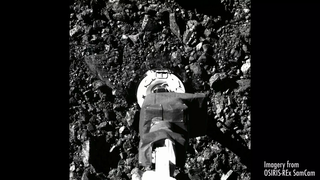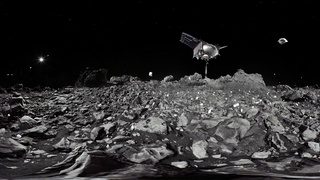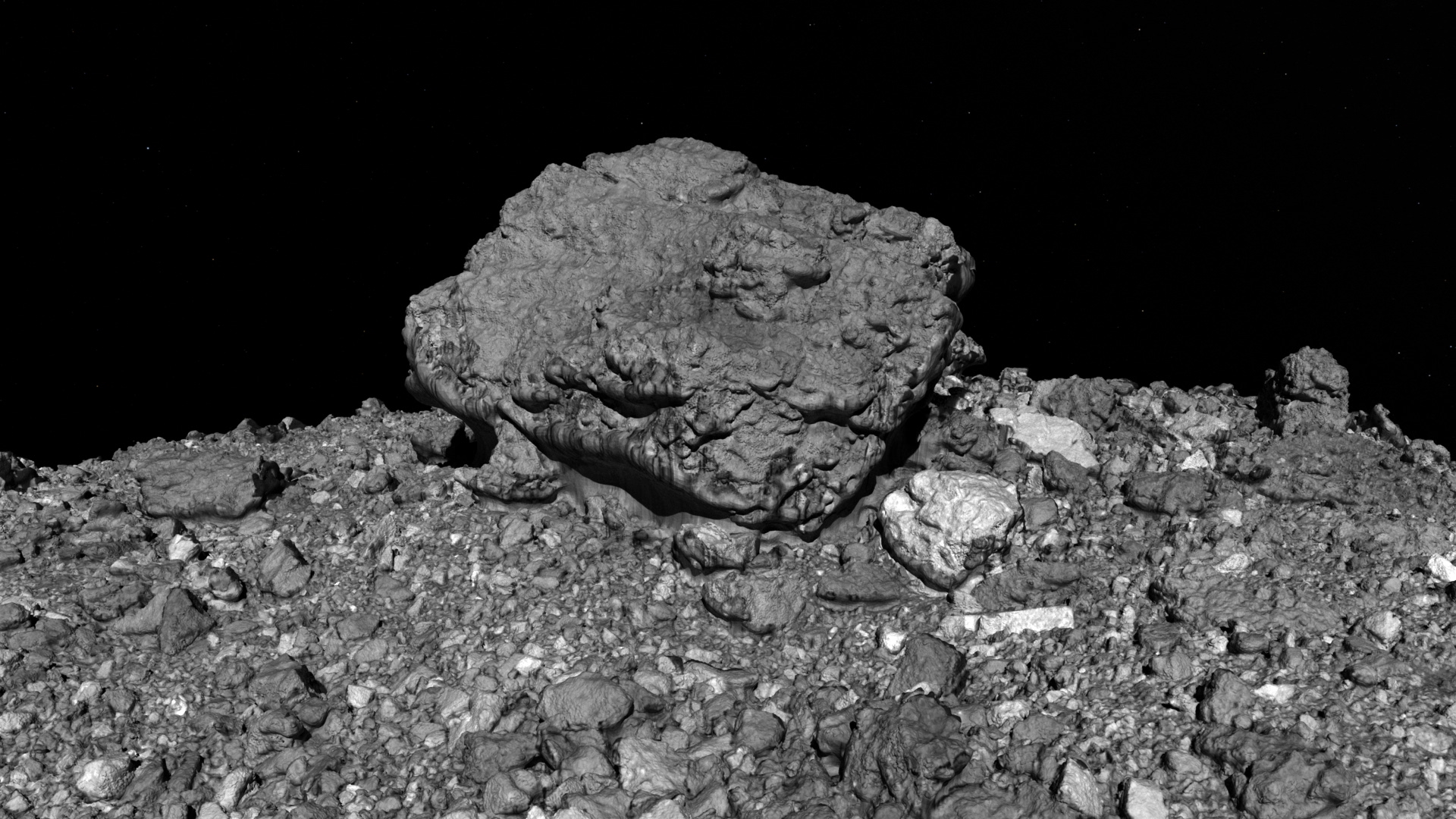NASA’s OSIRIS-REx Begins its Journey Home with a Bounty of Asteroid Sample Live Shots

Associated b-roll will be added by Friday May 7 by 5:00 p.m. EDT
NASA’s OSIRIS-REx spacecraft is on its way back to Earth! After almost two and a half years (two years, five months and eight days to be exact!) of operations at asteroid Bennu, the spacecraft is ready to come home carrying a bounty of asteroid material in its capsule.
But first, the spacecraft will need to perform another flawless maneuver for a successful departure. There is no straight path back to Earth. Like a quarterback throwing a long pass to where a receiver will be in the future, OSIRIS-REx is traveling to where the Earth will be in the future. The spacecraft has to go around the sun twice, covering 1.4 billion miles (2.3 billion kilometers) over 2.5 years to catch up with Earth.
NASA experts are available virtually for live or taped interviews on May 10 from 6:00 a.m. to 1:00 p.m. EDT - the morning of this historic maneuver - to tell your viewers how they can watch the event unfold, and what scientists hope to learn from this out-of-this-world sample from a nearby asteroid.
In 2016, NASA launched OSIRIS-REx on an epic mission to capture a sample of an asteroid and bring it back to Earth. On October 20, 2020, the spacecraft descended to the boulder-strewn surface of Bennu to a site called Nightingale, where the spacecraft’s robotic sampling arm snagged so much sample that it overflowed the collection system.
There are more than a million known asteroids in our solar system, but Bennu is an ideal candidate for closer study because of its size, composition and proximity to Earth. Bennu is an artifact of the ancient solar system, a silent witness to the titanic events in our solar system’s 4.6 billion-year history.
To Schedule an interview: Please fill out this form: https://forms.gle/32CNQ65bGPqwHCwH6
Please note: requests received after 2:00 p.m. EDT on Friday, May 7 may not be accommodated.
Interviews will be conducted using video chat programs including Zoom and Skype, in 15-minute slots. For example 600-615 ET, 615-630 EDT, etc. Our preferred program is Zoom and stations will have to send us a Zoom link to use. Satellite interviews are not available. Please do not use an IFB unless necessary.
Spanish Interviews are available
Participating Talent:
Danny Glavin, Associated Director for Solar System Science
Jason Dworkin, Project Scientist
Hannah Kaplan, Research Space Scientist, NASA Goddard Space Flight Center
Heather Enos, Deputy Principal Investigator, University of Arizona
Jim Garvin, Chief Scientist
Jessica Barnes, Assistant Professor, University of Arizona
Kenny Getzandanner, Flight Dynamics Manager
Anjani Polit, OSIRIS-REx Mission Implementation Systems Engineer, University of Arizona
Andera Jones, Public Engagement Lead, NASA GSFC Solar System Exploration Division
Geronimo Villanueva, Planetary Scientist [Interviews in Spanish]
Nayi Castro,Mission Operations Manager [Interviews in Spanish]
Lucas Paganini, NASA Program Scientist [Interviews in Spanish]
Suggested Anchor Intro:
Five years ago NASA launched its first sample return mission.. OSIRIS-REX.. to an asteroid… Now it's time for the mission to start its return back to earth. To tell us more about this exciting endeavor we have NASA’s XXX...
Suggested Questions
1.OSIRIS-REx will depart from Bennu this afternoon at 4:23 pm ET. What needs to happen for the sample return capsule to have a flawless landing on Earth.
2. Let's backtrack a little, can you explain briefly why NASA sent a mission to an asteroid?
3.OSIRIS-REx collected a bounty of asteroid sample. What will NASA do with it?
4.Recently, OSIRIS-REx did one last flyover of the sample site. Why?
5.Over the last two years, OSIRIS-REx has collected a lot of data on Bennu. What are you most excited about?
6.How can our viewers watch OSIRIS-REx’s departure from Bennu?
B-ROLL for live shot interviews. TRT of 4:58
For More Information
Credits
Please give credit for this item to:
NASA's Goddard Space Flight Center
-
Producers
- Michelle Handleman (USRA)
- Courtney A. Lee (ADNET Systems, Inc.)
- Christina Brooke Mitchell (KBR Wyle Services, LLC)
- James Tralie (ADNET Systems, Inc.)
-
Technical support
- Aaron E. Lepsch (ADNET Systems, Inc.)
Release date
This page was originally published on Tuesday, May 4, 2021.
This page was last updated on Wednesday, May 3, 2023 at 1:44 PM EDT.







